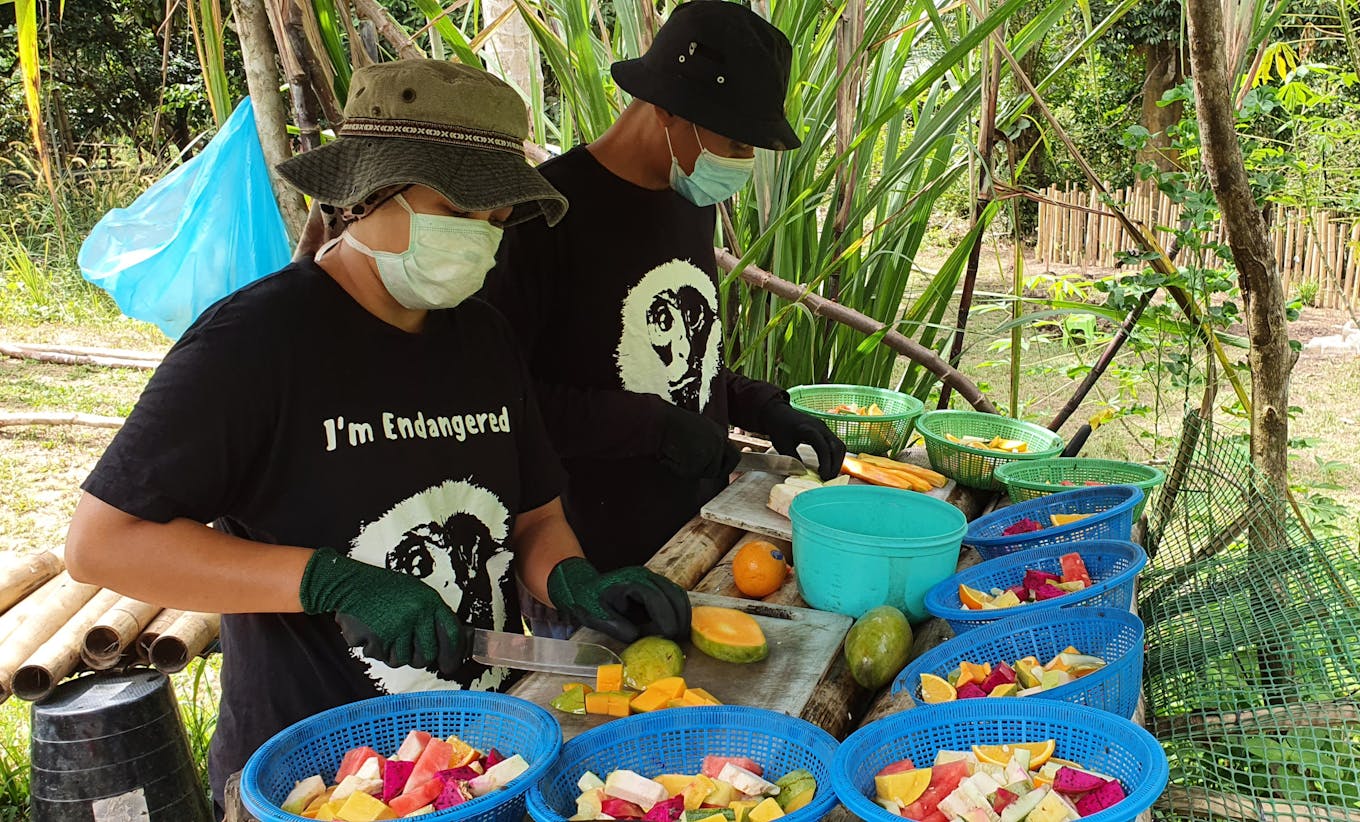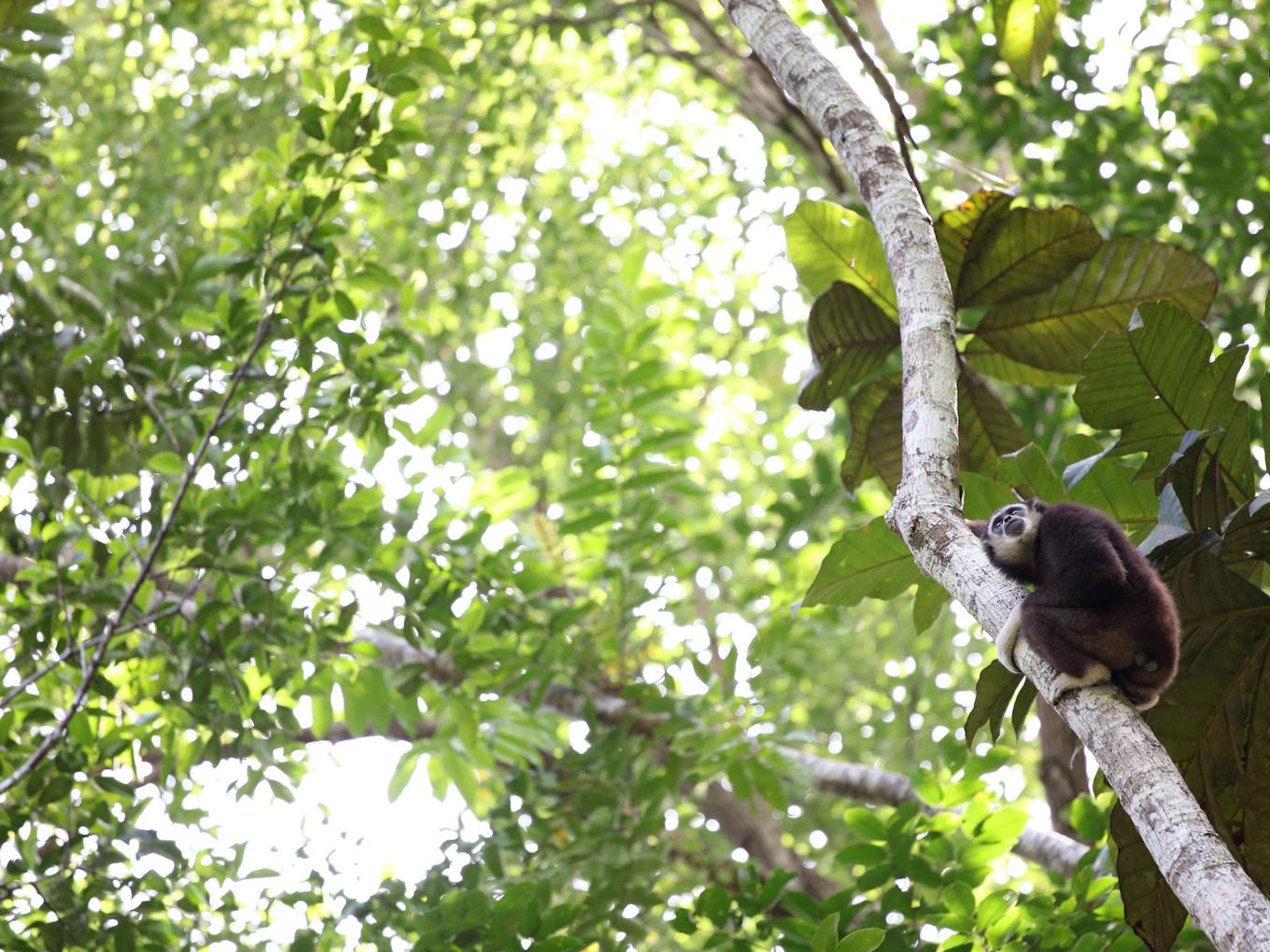Mariani Ramli started her work with gibbons back in 2013, when she realised that there was a lack of specific rehabilitation programmes for the oft-overlooked small apes in Malaysia.
She first learned about the importance of distinct conservation programmes for different wild animals when she was a researcher at Copenhagen Zoo, and proceeded to volunteer in Thailand, Cambodia and Indonesia to study how rehabilitation programmes in these countries worked. While Malaysia was lagging behind, its neighbouring countries have had programmes running since the 1990s.
As director of the Gibbon Rehabilitation Project (GReP) and president of Gibbon Conservation Society over the last decade or so, Ramli supervises daily operations and ensures that the white-handed gibbons under her care go through a proper rehabilitation process. Rehabilitation can take five to 15 years for each gibbon before they can be released in the wild, depending on their history and level of trauma they have experienced, Ramli shared.
“Without proper rehabilitation, more than 90 per cent of the gibbons involved in wildlife trade will die because they don’t know how to survive after such traumatic situations. Most of the time, poachers kill their parents and go after the baby gibbons,” she said.
“
We’ve been spending more time in the jungle to find food because the Covid-19 pandemic really affected our funding.
While deforestation and other more common causes of wildlife decline affect gibbons, the illegal wildlife pet trade is by far the biggest contributing factor to the decline in numbers in the wild. It is estimated that over 200 gibbons die for one to become a pet. White-handed gibbons, also known as lar gibbons, are classified by the International Union for Conservation of Nature as endangered.

Dexter being rescued from a house in Kuala Lumpur, Malaysia. Image: Jacob Emerson/JJEmerson Wildlife
“For me, saving gibbons from extinction and rehabilitating them is a life-long commitment. We also need to keep educating the public so that people understand that they should not keep wildlife as pets. We shouldn’t take them out of the jungle because the process of sending them back takes so long,” Ramli stressed.
“Completing the circle of conservation requires enforcement, rehabilitation, enrichment and education. After confiscating the animals from wildlife traders, they may still die after being released so rehabilitation is a key part of the process,” she added.
GReP currently houses 10 gibbons and the team follows international guidelines for rehabilitation, which outline seven criteria of physical and mental well-being before the gibbons can be reintroduced to the wild.
Here’s how Ramli spends her day:
7am: Prepare the first meal for the gibbons. We call them gibbon balls and they contain carbohydrate, protein and nutrition.

Ramli and her colleague preparing fruits for the gibbons. Image: Gibbon Conservation Society
8.30am: The team prepares the main breakfast for the gibbons, which contains fruits and vegetables. At the same time, we have our own breakfast together.
9.30am: Cleaning time for all the enclosures.
11am: We conduct behavioural data collection for selected gibbons. This is to monitor their progress in rehabilitation and their wild behaviour. Seeing the gibbons’ progress before and after rehabilitation encourages us to continue doing the work because we’re really saving lives.
Rescued gibbons come to us in really bad shape—pulling out their hair, biting their own hands and self-rocking—it really breaks my heart. But when they slowly start to socialise with other gibbons, and start singing, it’s such a relief.
Since all the gibbons in the enclosure are orphans, they form really close bonds and will fiercely protect one another.
12.30pm: We conduct enrichment activities for the gibbons to stimulate their brains and make sure that they have activities to do in the enclosure. An example that they love is the food puzzle where we arrange a puzzle using a firehose and leaves, so they have to solve it to get the reward—usually that’s food.
Gibbons are supposed to be highly arboreal so we throw these puzzles to the top of the enclosure to encourage them to hang out in high places. They’re the fastest primates in the world so it always amazes me to watch them swing through trees so quickly. Gibbons can move as far as 15 meters in a single swing, and at speeds of more than 55 kilometers an hour.

Bella and Lola during fruit enrichment time. Image: Stephanie Theresa/Infinim Creative Productions
1.30pm: Lunch and rest.
2.30pm: We give the gibbons supplements like multivitamins because some of them are malnourished. Then we prepare for afternoon feeding.
3.30pm: Maintenance and housekeeping. This is the time we prepare and make any enrichment tools that we might need for the following days, so we collect bamboo and leaves. We also clean the centre and cut the grass—anything that needs fixing up is done during this period.
We’ve been spending more time in the jungle to find food because the Covid-19 pandemic really affected our funding. We need to stretch our funds and ration our food. Things are slowly getting better, but we’re not back to normal conditions yet.
5.30pm: We weigh the leftover food to track the gibbons’ eating habits and clean their food buckets. Then we leave them to settle down for the night.
6.30pm At this time, I usually do my own activities with the project house dogs who we call the ‘gibbon guardians’. This is also hangout time for the team.
7.30pm: Dinner time. We just chit chat and debrief among the team while enjoying home-cooked food.
9pm: This is the time for my least favourite activity—computer work and paperwork.
10pm: I head back to the project house, which is near the rehabilitation centre. Sleep and repeat.

Chantiq resting, taken during free-ranging training at GReP Pahang. Image: Stephanie Theresa/Infinim Creative Productions

Chinta bipedal walking. Image: Stephanie Theresa/Infinim Creative Productions














